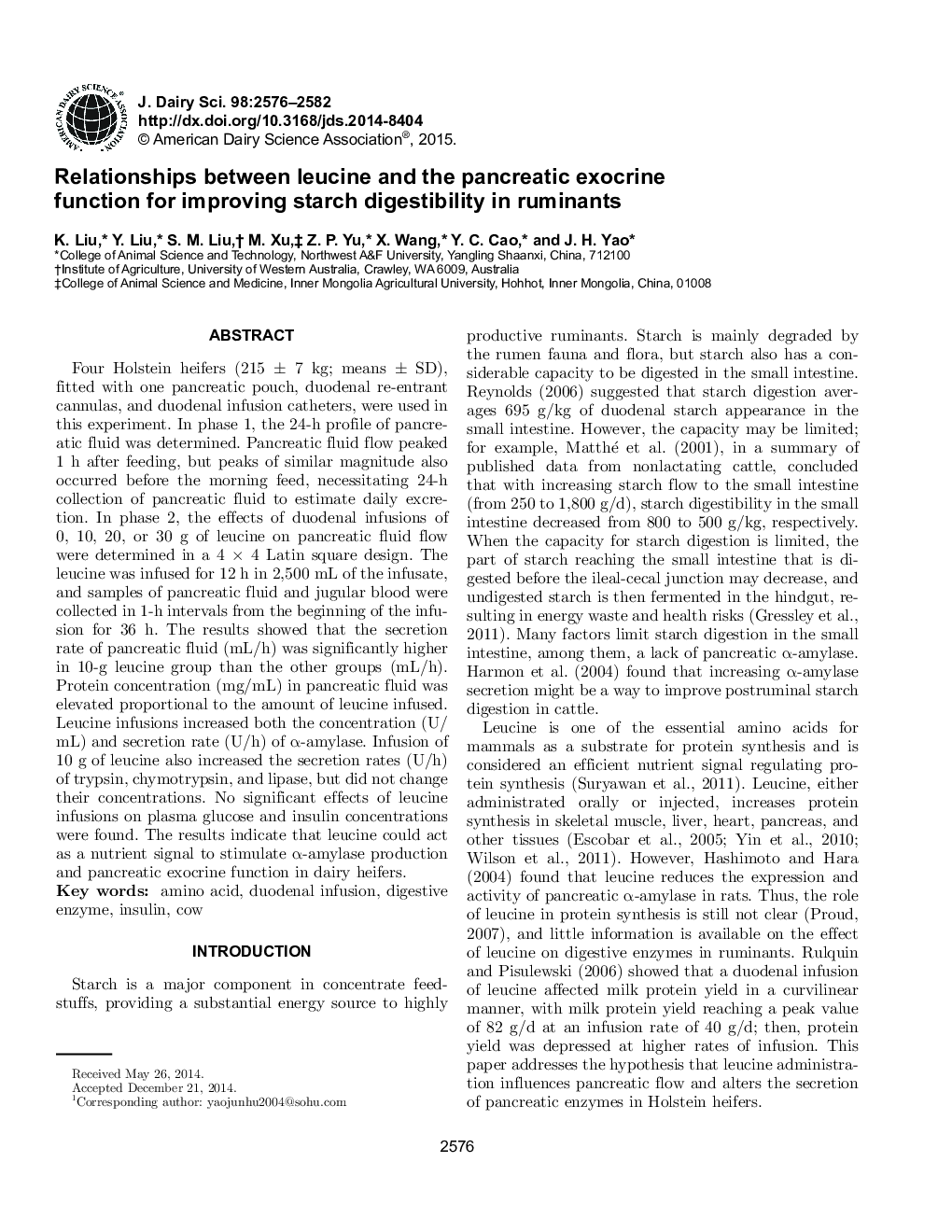| Article ID | Journal | Published Year | Pages | File Type |
|---|---|---|---|---|
| 10974791 | Journal of Dairy Science | 2015 | 7 Pages |
Abstract
Four Holstein heifers (215 ± 7 kg; means ± SD), fitted with one pancreatic pouch, duodenal re-entrant cannulas, and duodenal infusion catheters, were used in this experiment. In phase 1, the 24-h profile of pancreatic fluid was determined. Pancreatic fluid flow peaked 1 h after feeding, but peaks of similar magnitude also occurred before the morning feed, necessitating 24-h collection of pancreatic fluid to estimate daily excretion. In phase 2, the effects of duodenal infusions of 0, 10, 20, or 30 g of leucine on pancreatic fluid flow were determined in a 4 Ã 4 Latin square design. The leucine was infused for 12 h in 2,500 mL of the infusate, and samples of pancreatic fluid and jugular blood were collected in 1-h intervals from the beginning of the infusion for 36 h. The results showed that the secretion rate of pancreatic fluid (mL/h) was significantly higher in 10-g leucine group than the other groups (mL/h). Protein concentration (mg/mL) in pancreatic fluid was elevated proportional to the amount of leucine infused. Leucine infusions increased both the concentration (U/mL) and secretion rate (U/h) of α-amylase. Infusion of 10 g of leucine also increased the secretion rates (U/h) of trypsin, chymotrypsin, and lipase, but did not change their concentrations. No significant effects of leucine infusions on plasma glucose and insulin concentrations were found. The results indicate that leucine could act as a nutrient signal to stimulate α-amylase production and pancreatic exocrine function in dairy heifers.
Related Topics
Life Sciences
Agricultural and Biological Sciences
Animal Science and Zoology
Authors
K. Liu, Y. Liu, S.M. Liu, M. Xu, Z.P. Yu, X. Wang, Y.C. Cao, J.H. Yao,
